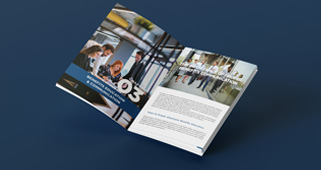In today’s competitive business environment, attracting and retaining top talent is more challenging than ever. One of the key elements that can set a company apart is its employee benefits package. However, managing these benefits can be complex and time-consuming, especially as organizations grow and the workforce becomes more diverse. This is where Benefits Administration Systems (BAS) come into play. These systems streamline the process of managing employee benefits, ensuring efficiency, compliance, and employee satisfaction. This blog explores the evolution, features, benefits, and considerations for companies using Benefits Administration Systems in today’s marketplace.
1. The Evolution of Benefits Administration Systems
Benefits administration has evolved significantly over the past few decades. Initially, managing benefits was a manual process involving a lot of paperwork and spreadsheets. HR departments were responsible for everything from enrollment to compliance, which was not only time-consuming but also prone to errors.
With the advent of technology, the landscape began to change. The first generation of Benefits Administration Systems emerged in the late 20th century, providing digital solutions to streamline basic tasks like enrollment and record-keeping. These systems have since evolved into sophisticated platforms that integrate with other HR systems, offering a wide range of features designed to simplify benefits management and enhance the employee experience.
2. Key Features of Modern Benefits Administration Systems
Modern Benefits Administration Systems come equipped with a variety of features that cater to the needs of both employers and employees. Here are some of the key features:
- Automated Enrollment and Eligibility Management: Automated systems simplify the enrollment process, ensuring that employees can easily sign up for benefits during open enrollment periods or when they become eligible. These systems also handle changes in employee status, such as new hires, terminations, and life events, automatically updating eligibility and coverage.
- Integration with Payroll and HR Systems: Integration with payroll and other HR systems ensures seamless data flow, reducing the need for manual data entry and minimizing errors. This integration also helps in maintaining accurate records and compliance with regulatory requirements.
- Self-Service Portals: Employee self-service portals allow employees to manage their benefits online. They can view their benefits options, make changes, and access important information without needing to contact HR. This increases convenience and reduces the administrative burden on HR staff.
- Compliance Management: Benefits Administration Systems help ensure compliance with various regulations, such as the Affordable Care Act (ACA), COBRA, and HIPAA. These systems can generate reports, track deadlines, and provide alerts for regulatory requirements, reducing the risk of non-compliance.
- Data Analytics and Reporting: Advanced reporting and analytics tools provide insights into benefits utilization, costs, and employee engagement. These insights can help HR professionals make data-driven decisions about their benefits programs.
- Communication Tools: Effective communication is key to a successful benefits program. Modern systems include tools for creating and distributing personalized benefits information, such as newsletters, emails, and notifications.
- Mobile Access: With the increasing use of mobile devices, many systems offer mobile-friendly interfaces, allowing employees to access their benefits information anytime, anywhere.
3. Benefits of Using Benefits Administration Systems
Implementing a Benefits Administration System offers numerous advantages for both employers and employees. Here are some of the primary benefits:
- Efficiency and Time Savings: Automated processes reduce the time spent on administrative tasks, allowing HR professionals to focus on strategic initiatives. Employees can easily manage their benefits, leading to quicker resolution of issues and fewer delays.
- Improved Accuracy: Automation and integration with other systems minimize the risk of errors in data entry and calculations, ensuring that employees receive the correct benefits and reducing the potential for costly mistakes.
- Enhanced Employee Experience: Self-service portals and mobile access provide employees with greater control over their benefits, leading to higher satisfaction and engagement. Employees can access information and make changes at their convenience, improving their overall experience.
- Cost Savings: By streamlining administrative processes and reducing errors, companies can achieve significant cost savings. Additionally, data analytics can help identify cost-saving opportunities, such as optimizing plan designs or negotiating better rates with providers.
- Compliance and Risk Management: Ensuring compliance with complex regulations can be challenging. Benefits Administration Systems help manage compliance by automating reporting and tracking requirements, reducing the risk of penalties and legal issues.
- Data-Driven Decision Making: Access to detailed analytics and reporting allows HR professionals to make informed decisions about their benefits programs. They can identify trends, assess the effectiveness of different plans, and make adjustments to better meet the needs of their workforce.
4. Considerations When Choosing a Benefits Administration System
Selecting the right Benefits Administration System is crucial to maximizing its advantages. Here are some key considerations to keep in mind:
- Scalability: Ensure that the system can scale with your organization’s growth. It should be able to handle an increasing number of employees and adapt to changes in benefits offerings.
- Integration Capabilities: The system should integrate seamlessly with your existing HR, payroll, and financial systems. This integration is essential for ensuring data accuracy and streamlining administrative processes.
- User-Friendly Interface: Both HR administrators and employees should find the system easy to use. A user-friendly interface enhances adoption and reduces the need for extensive training.
- Customization Options: Every organization has unique needs. The system should offer customization options to tailor the benefits offerings and workflows to your specific requirements.
- Vendor Support and Training: Evaluate the level of support and training provided by the vendor. This includes initial setup, ongoing support, and resources for troubleshooting and maximizing the system’s capabilities.
- Security and Data Privacy: Given the sensitive nature of benefits data, robust security measures are essential. Ensure that the system complies with data privacy regulations and employs advanced security protocols to protect employee information.
- Cost: Consider the total cost of ownership, including implementation, licensing, and ongoing maintenance fees. Compare this with the potential savings and benefits to determine the system’s return on investment.
5. Popular Benefits Administration Systems in the Marketplace
Several Benefits Administration Systems are widely used in today’s marketplace. Here are a few notable examples:
- Workday: Known for its comprehensive suite of HR solutions, Workday offers robust benefits administration capabilities, including automated enrollment, compliance management, and data analytics.
- ADP: ADP provides a range of HR and payroll solutions, including benefits administration. Its platform integrates seamlessly with payroll and offers employee self-service portals and compliance tools.
- BambooHR: BambooHR is a popular choice for small to mid-sized businesses. It offers an intuitive interface, self-service options, and integration with other HR systems.
- Paycom: Paycom’s benefits administration module is part of its broader HR and payroll platform. It offers features such as automated enrollment, compliance tracking, and mobile access.
- Zenefits: Zenefits is designed for small to mid-sized businesses and offers a comprehensive benefits administration system with a focus on ease of use and integration with other HR functions.
6. The Future of Benefits Administration Systems
The future of Benefits Administration Systems is likely to be shaped by advancements in technology and changing workforce dynamics. Here are some trends to watch:
- Artificial Intelligence (AI) and Machine Learning: AI and machine learning can enhance benefits administration by providing personalized recommendations, automating complex processes, and identifying trends and patterns in benefits utilization.
- Increased Personalization: As employees demand more personalized benefits, systems will evolve to offer greater customization options, allowing organizations to tailor benefits packages to individual needs.
- Enhanced Employee Engagement: Future systems will likely include more interactive and engaging features, such as gamification, wellness programs, and social features, to enhance employee engagement and participation.
- Blockchain Technology: Blockchain has the potential to revolutionize data security and transparency in benefits administration. It can provide a secure, tamper-proof way to manage and share benefits information.
- Integration with Health and Wellness Programs: As holistic health and wellness become more important, benefits administration systems will integrate more closely with wellness programs, offering a seamless experience for employees.
Benefits Administration Systems have become indispensable tools for modern organizations, simplifying the management of complex benefits programs and enhancing the employee experience. By automating administrative tasks, ensuring compliance, and providing valuable insights through data analytics, these systems offer numerous advantages that can lead to cost savings, improved efficiency, and higher employee satisfaction.
As the marketplace continues to evolve, companies must carefully evaluate their options and choose a Benefits Administration System that meets their specific needs and goals. By considering factors such as scalability, integration capabilities, user experience, and vendor support, organizations can select a system that not only meets current requirements but also adapts to future challenges and opportunities.
Investing in a robust Benefits Administration System is a strategic move that can pay off significantly in the long run, positioning companies to attract and retain top talent, maintain compliance, and foster a healthier, more engaged workforce.
Connect with Benely to see how we can partner and consult on the right ben admin system for your company.






